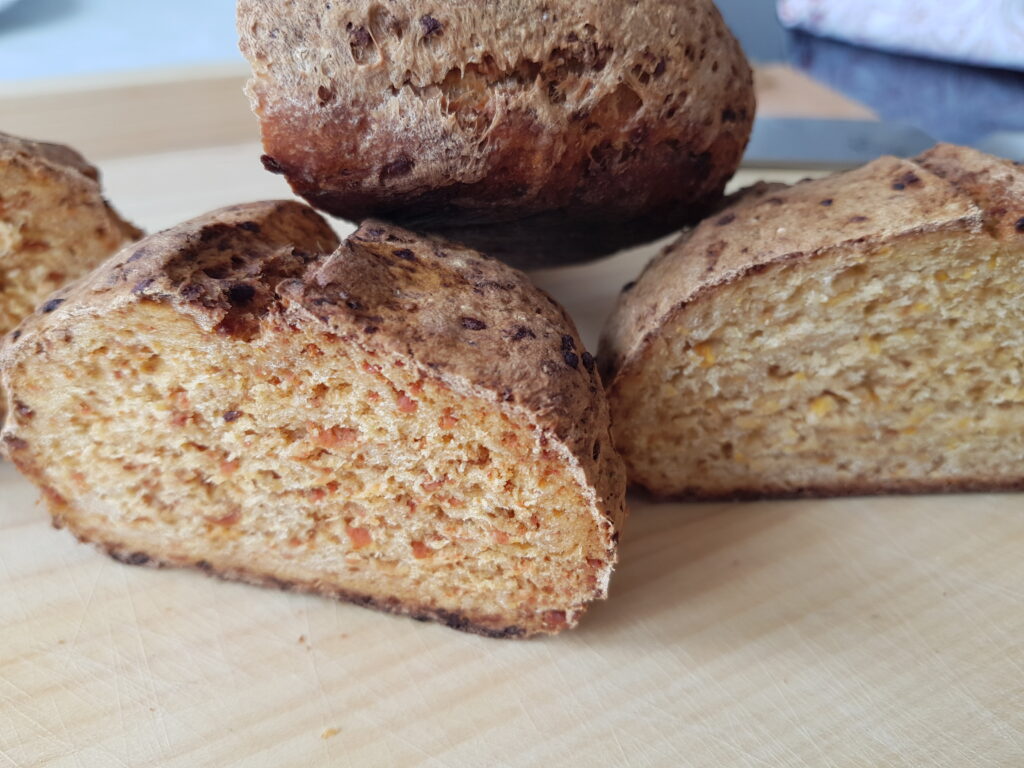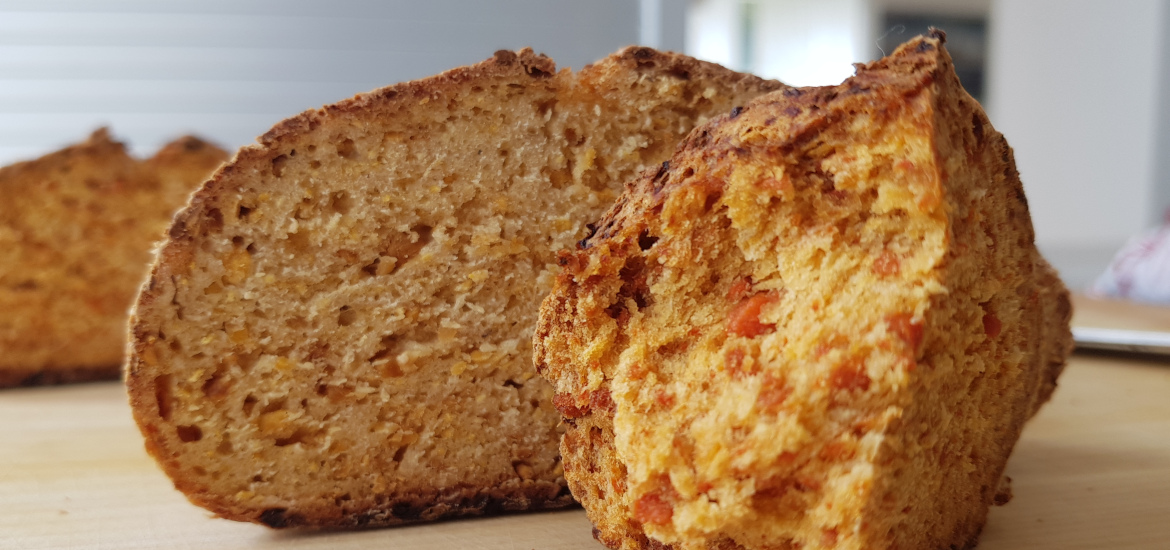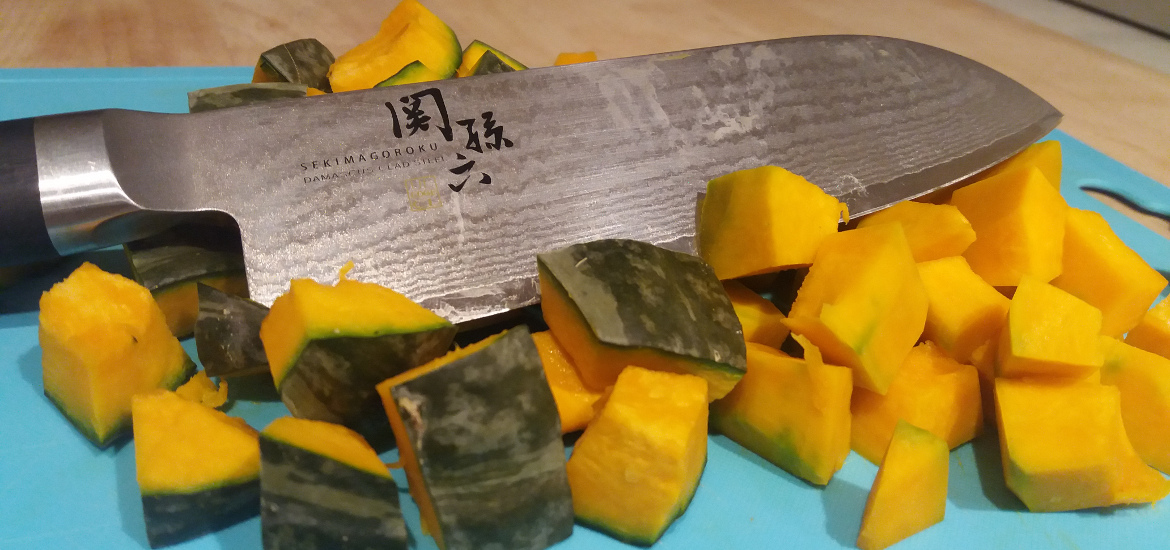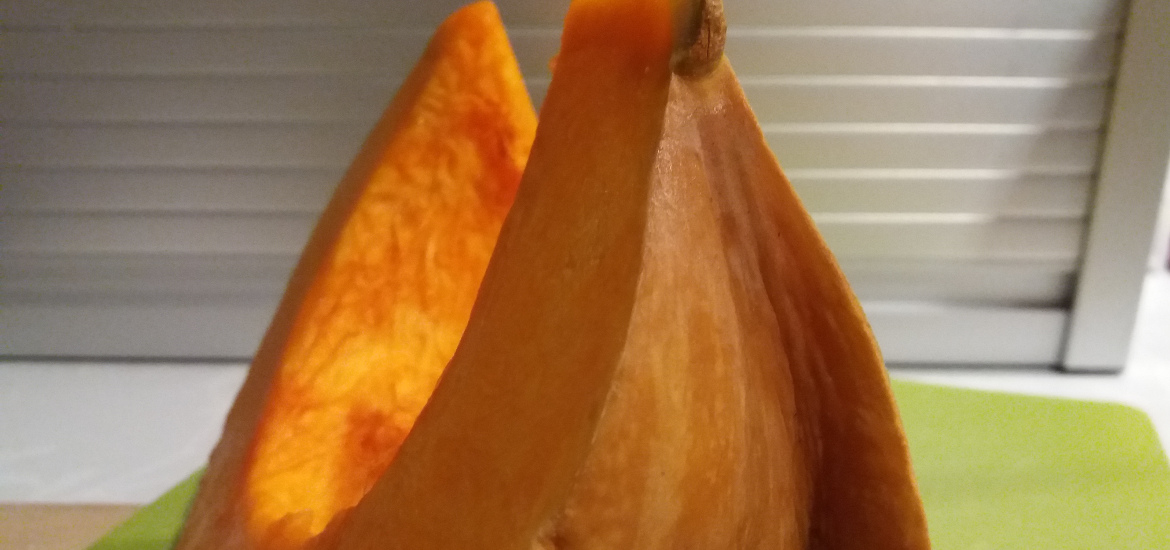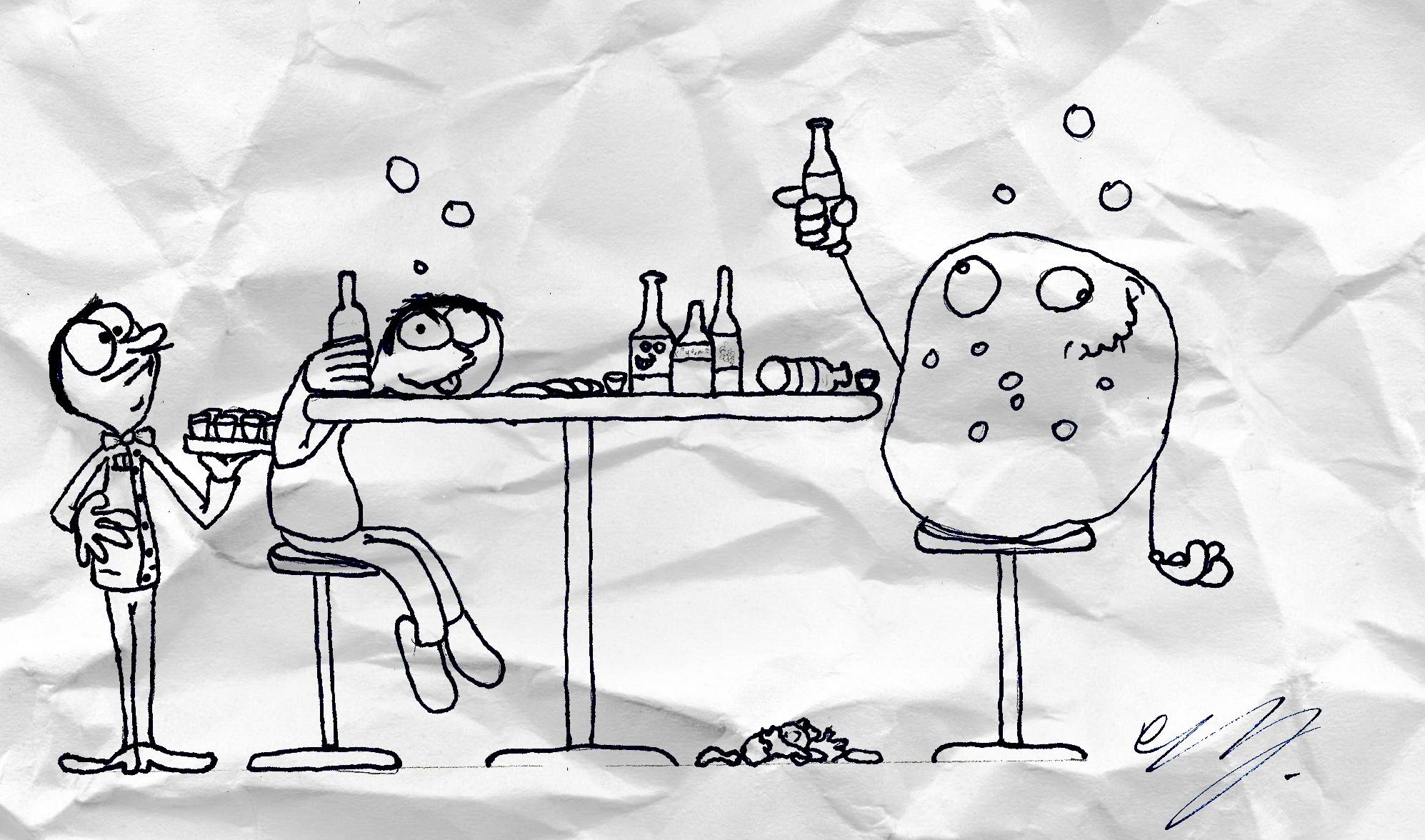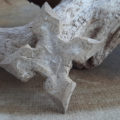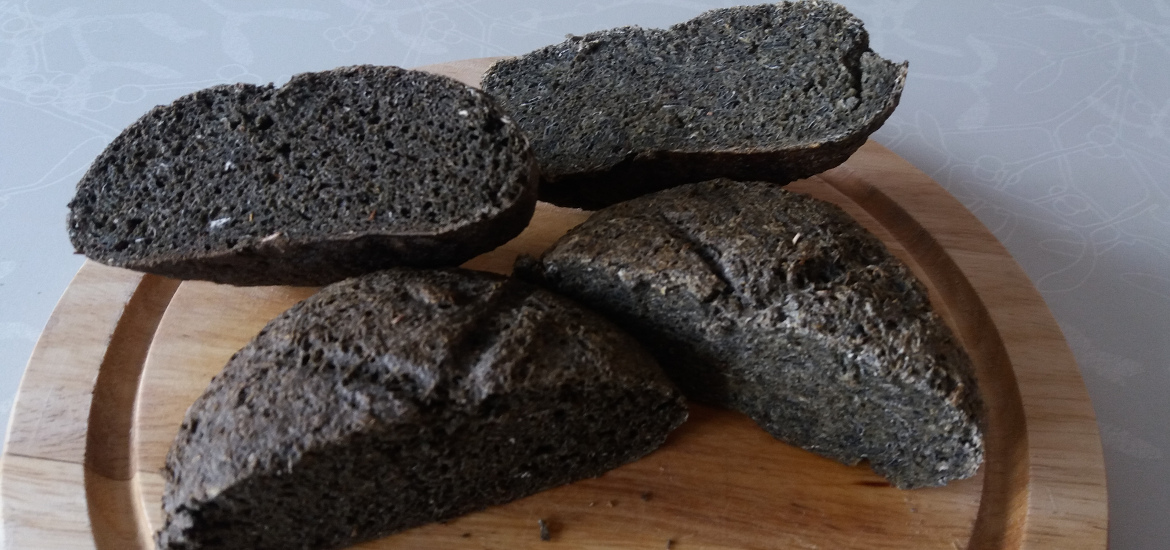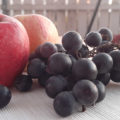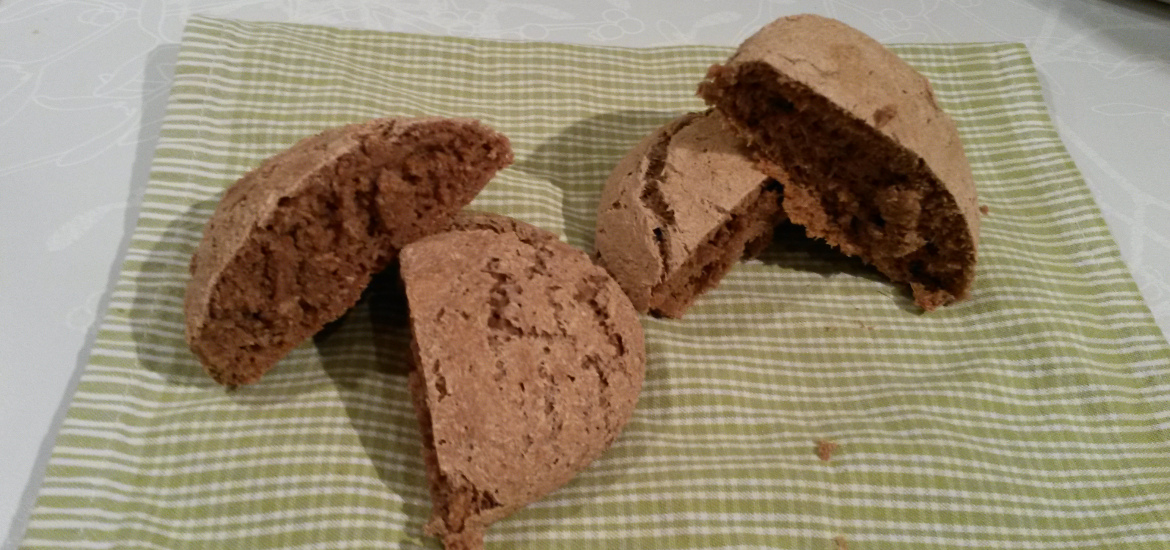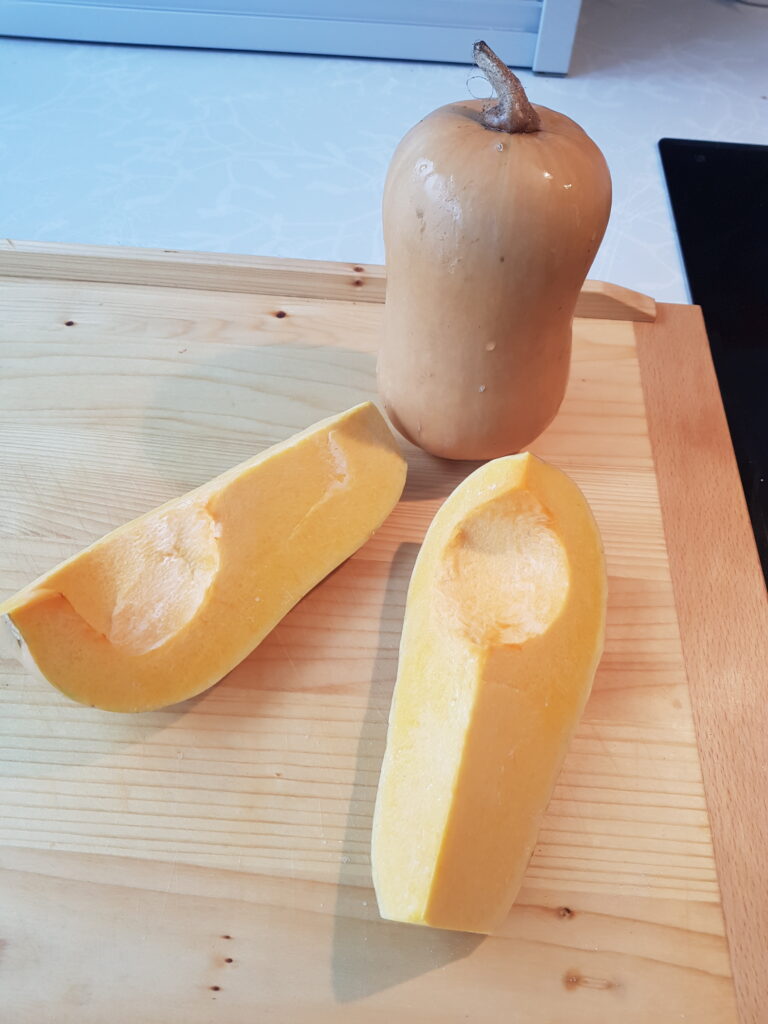
After experiments with bark bread, resin bread and lichen bread, there were some suggestions to try something more palatable. An article about pumpkin history gave me the idea that dried pumpkins could be an excellent substance for bread dough. People have been drying pumpkins for millenia, so it should not be that complicated. And dried pumpkins contain mostly carbohydrates, so a perfect material for bread making. Finally, the taste should also be quite pleasant, even biscuit-like. There are also some recipes to be found on the internet like this and this one. They cover all the ranges, from sweet to salty, but use canned pumpkin, not dried pumpkin. I will definitely take some pointers from them and try to create the best possible pumpkin bread.
Making pumpkin flour
The first thing in making pumpkin bread is to get pumpkin flour. The easiest way is to dry pieces of pumpkin, but be warned that the yields are low, since pumpkins in general contain more than 90% water. Anyway, I gave it a try. I cut up a pumpkin, more specifically Butternut Squash, which I presumed contained a relatively low amount of water. Wikipedia confirmed this, and my experiment also showed that you can get around 60 g of dried pumpkin out of 500 g of fresh one. That is 88% water, comparable to the amount given in Wikipedia. The pumpkin pieces shrunk considerably, from around 2 centimeters to 0.5 centimeters. And they were rock hard and impossible to chew. But a short blending at maximum speed did the trick and turned the cubes into powder. Next time it might be a better idea to cut smaller cubes, which would bend even more easily and quickly.
I made another experiment. This time I used another pumpkin, namely Fairytale pumpkin. This type of pumpkin is sweeter tasting and to enhance this even further, I baked the pumpkin pieces in an oven at 180 °C for 20 min. Pumpkin softened and released some water which I figured would shorten the drying time. And hopefully the dried pumpkin would be easier to turn to powder. Well, there was not much difference in drying time, at least no notable difference. The pumpkin lost around 87% water, comparable to the first experiment and Wikipedia data. As for the blending, no major difference was observed compared to the first experiment, and everything went smoothly and relatively quickly.
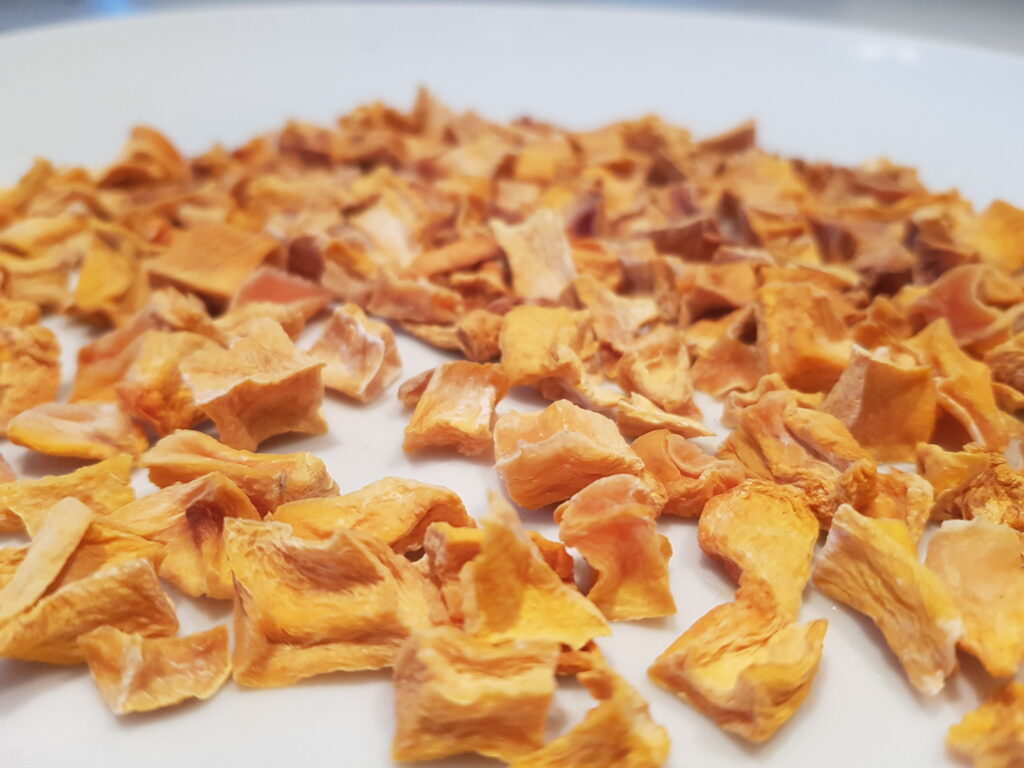
Making bread
Now for the bread. I added 30% powdered pumpkin to 80% regular wheat flour. I figured such an amount would make a marked difference, while still allowing me to make regular bread. This is more than other recipes, where they used approximately 10% of powdered pumpkin equivalent. But I believe this is mostly due to the fact that pumpkin was added as pulp and therefore the maximum amount that you can give us is limited with water content. If you give too much pulp, your dough will be too soft and sticky.
For the spices I used the standard ones: nutmeg and salt. The sweetness will come from the pumpkin and that is all I need. And some yeast, to make the bread fluffy and soft.
After mixing all ingredients, I added enough warm water to make a nice, firm bread dough. After about three hours the dough had risen slightly and finally it was baked at 220 °C for 30 minutes. Next time I should activate the yeast in warm water with a bit of sugar, since the dough rose only slightly. And bake at lower heat, since the bread was a bit burnt on the surface.
Pumpkin bread tasting
Anyways, the bread was good. A bit hard, definitely not fluffy, but this can be easily corrected with enough activated yeast. Otherwise, both breads were sweet, distinctly pumpkin tasting. The bread with the baked pumpkin was a bit too intense, with a strong pumpkin and nutmeg taste. Just drying the pumpkin is therefore enough, there is no need to bake it, since it adds no value. On the other hand, milled dried pumpkins are also bigger pieces, which release flavor in short, delayed bursts, like mini pumpkin flavor grenades – delicious! If you are a pumpkin fan, then this bread is definitely something to try out!
